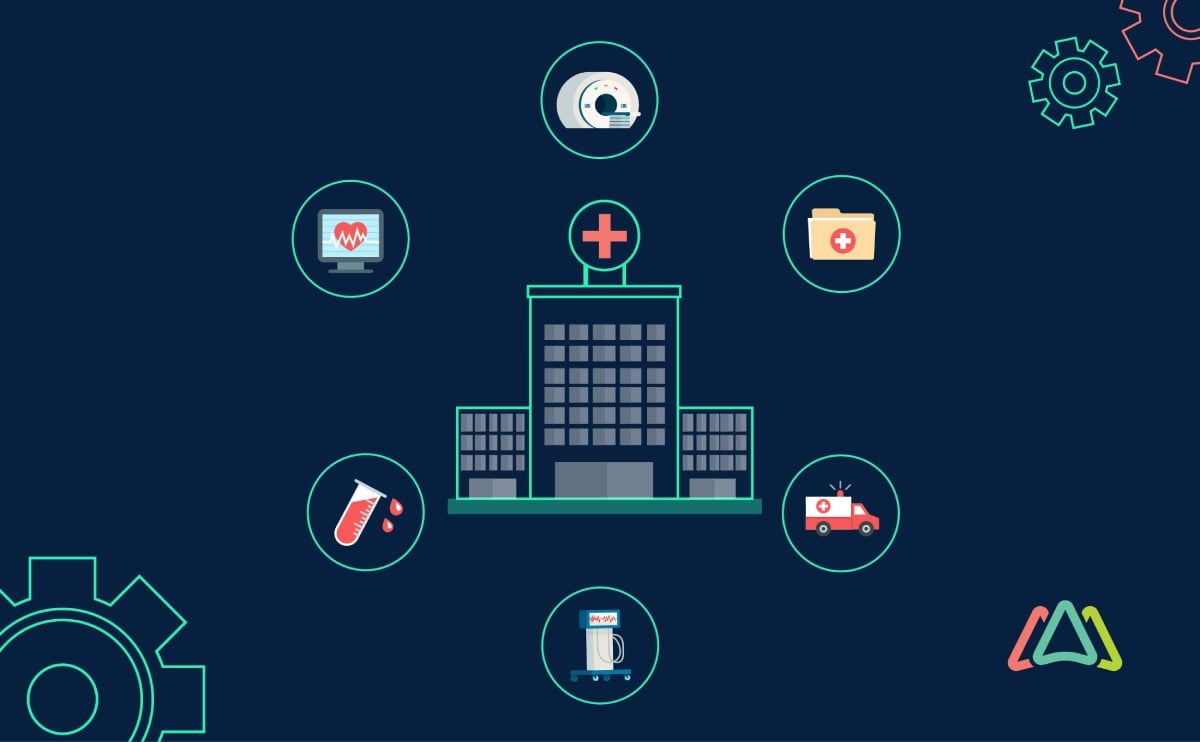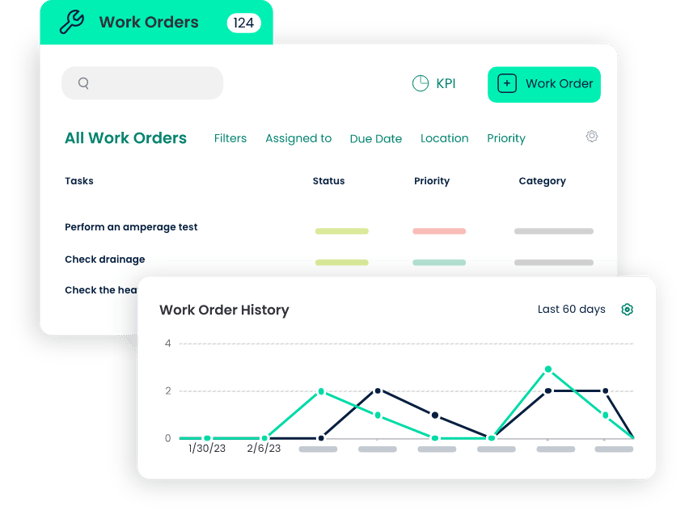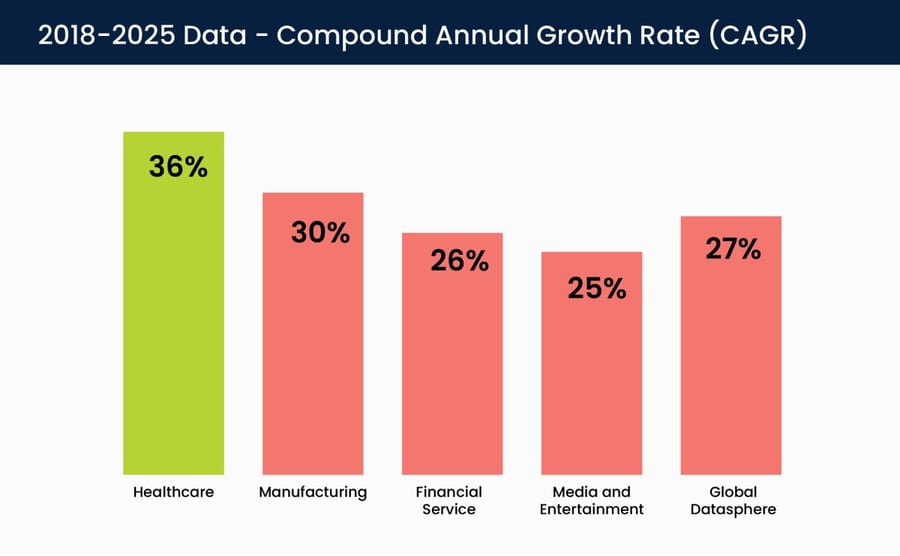
CMMS for Healthcare Facilities: Transforming Operational Challenges into Opportunities
Facility management plays a vital role in the success of healthcare organizations as it directly impacts patient care, staff productivity, operational costs, and regulatory compliance. Well-maintained medical equipment, properly managed assets, and efficient workflows contribute to the smooth functioning of hospitals to ensure a safe, clean and comfortable environment for patients and staff alike. Effective facility management helps prevent equipment breakdowns, reduces downtime, and enhances the longevity of assets, resulting in improved patient care and increased operational efficiency.
Effective facility management is crucial for delivering high-quality patient care. A key technology that has revolutionized facility management in healthcare organizations is the implementation of Computerized Maintenance Management Systems (CMMS).
What is CMMS for Healthcare Facilities?
CMMS for healthcare facilities is a software solution specifically designed to address the unique needs of hospitals and clinics when it comes to maintenance, equipment management, and facility operations. It streamlines and automates different aspects of healthcare facility management, such as asset tracking, work order management, inventory management and compliance. It serves as a centralized platform for organizing, monitoring, and optimizing critical facility operations, ultimately improving the efficiency and effectiveness of these facilities. More specifically, CMMS for healthcare ensures that the facilities and its assets are up and running with minimal downtime, comply with regulatory requirements and the highest safety standards for its patients and employees.
Addressing Operational Challenges in Healthcare
Hospitals and clinics face numerous challenges when it comes to maintenance, equipment management, and facility operations. These challenges, if not addressed, can negatively impact patient care, staff productivity, and operational efficiency. However, implementing a Computerized Maintenance Management System designed for healthcare facilities addresses these challenges head on. Below are some common challenges faced by healthcare organizations and how CMMS software helps overcome them:
1. Equipment Downtime, Failures and Unplanned Repairs
Hospitals and clinics rely heavily on medical equipment like MRI machines, CT Scanners, X-Ray machines, generators, sterilization equipment, and air purifiers to deliver quality patient care. Any equipment downtime or breakdown can disrupt workflows, delay treatments, and affect patient outcomes.
SOLUTION:
Shift to Preventive and Predictive Maintenance with a CMMS
- Develop Maintenance Schedules with Checklists: CMMS for healthcare enables the creation of maintenance schedules with checklists for all critical equipment and systems. This helps ensure that regular inspections, servicing, and preventive maintenance tasks are performed in a timely manner and reduces unexpected repairs and downtime.
- Track and Monitor Equipment Performance: Through monitoring devices and sensors, a CMMS captures real-time data on equipment performance. This allows for proactive monitoring, early detection of potential issues, and prompt maintenance interventions to prevent breakdown before they happen.
- Implement Condition-based Maintenance Practices: Some CMMS platforms support condition-based maintenance strategies by utilizing data-driven insights. This helps in determining optimal maintenance intervals based on the actual condition and performance of medical equipment, thereby improving maintenance efficiency and reducing costs.
2. Lack of Asset Visibility and Tracking
Healthcare facilities often struggle with tracking and managing their extensive inventory of assets. Locating specific equipment, monitoring their usage, and track maintenance history are everyday real-life challenges for maintenance and facility professionals working in the healthcare industry.
SOLUTION:
Centralized Asset Management with a CMMS Software
CMMS software provides a centralized platform for managing and tracking all assets within healthcare facilities. It allows healthcare facilities to record asset details, track their locations, log asset condition and health, and monitor maintenance activities. With real-time asset visibility, hospitals and clinics can optimize asset utilization, streamline maintenance activities, and reduce the risk of misplaced or lost equipment.
- Create an Accurate Asset Inventory: CMMS software facilitates the creation and maintenance of asset inventory, also known as an asset registry. It records key details such as equipment specifications, serial numbers, model and manufacturing info, installation dates, warranty information, images and documents, and maintenance history. This ensures accurate and up-to-date asset records are easily accessible by facility managers, technicians and others.
- Implement Barcode, QR Code or RFID Technologies for Asset Tracking: CMMS software systems often generate or integrate with barcode or RFID technologies which enables efficient asset tracking and management. It simplifies the process of locating assets, tracking their movement within the facility, and managing their maintenance and repair history. QR codes can be scanned using mobile devices and all asset information that is logged can be accessed instantly. This is a huge time saver!
- Monitor Asset Lifecycle and Maintenance History: CMMS systems enable healthcare organizations to track the complete lifecycle of assets, from acquisition to disposal. They help in identifying assets that require replacement or upgrades, optimizing asset utilization, and making informed financial decisions regarding budgeting for upcoming capital projects and expenses related to assets.
3. Inefficient Work Order Management
Hospitals and clinics receive a high volume of maintenance requests and work orders daily. Managing and prioritizing these tasks manually leads to delays, miscommunication, and ineffective resource allocation.
SOLUTION:
Streamlined Work Order Management and Tracking with a CMMS
CMMS for healthcare facilities streamlines work order management by providing a digital platform for creating, assigning, and tracking incoming maintenance requests and work orders. This improves communication, enhances workflow efficacy, and reduces response times for maintenance requests.
- Efficiently Create, Assign, and Track Work Orders: A CMMS helps with work order management by providing a digital platform for creating, assigning, and tracking maintenance tasks and requests. It ensures that work orders are accurately recorded, assigned to the appropriate technician or vendor, and monitored throughout the completion process. This reduces the risk of work orders and requests falling through the cracks and being missed.

- Prioritize and Schedule Maintenance Tasks: With a CMMS, hospitals and clinics can prioritize maintenance tasks based on urgency, criticality, and resource availability. The system allows for efficient scheduling of tasks, ensuring that the most critical issues are addressed promptly.
- Monitor Work Order Progress and Completion: CMMS software provides real-time visibility into work order status, allowing facility and maintenance managers to monitor progress, identify bottlenecks, and ensure timely completion of maintenance tasks. It facilitates better coordination and communication among maintenance teams and 3rd party vendors.
4. Poor Inventory Control and Stock Management
Maintaining an optimal inventory level of supplies, spare parts, and consumables is crucial for healthcare facilities. Inaccurate stock counts, stock outages, or excessive inventory can disrupt operations by delaying time to complete and increasing costs due to rush orders.
SOLUTION:
Automated Inventory Control and Supply Chain Management with a CMMS
CMMS for healthcare automates inventory control processes such as tracking stock levels, setting reorder points, and generating purchase orders. It helps healthcare facilities maintain accurate inventory records, streamline procurement processes, and ensure that essential supplies are always available when needed.
.jpg?width=689&height=547&name=inventory-control-and-supply-chain-management%20(1).jpg)
- Manage and Optimize Inventory Levels: A CMMS supports inventory control by providing visibility into stock levels, tracking consumption rates, and setting reorder points. It helps hospitals and clinics maintain optimal inventory levels, prevent stockouts, and reduce carrying costs and higher costs from rush orders..
- Streamline Procurement Processes: By integrating with procurement systems, a CMMS streamlines the procurement process for maintenance supplies and spare parts. It automates purchase order generation, tracks delivery status, and facilitates seamless collaboration with suppliers.
- Track and Monitor Supply Chain Activities: A CMMS enables healthcare organizations to monitor and track supply chain activities. It provides visibility into supplier performance, delivery times, and inventory replenishment, ensuring a smooth and reliable supply chain.
5. Data in Silos
The healthcare industry generates vast amounts of data, with its volume growing exponentially every second. According to a report by RBC Capital Markets, the healthcare sector accounts for approximately 30% of the world's data volume.

Furthermore, it is projected that by 2025, the compound annual growth rate of data in healthcare will reach 36%, surpassing the growth rates of manufacturing, financial services, and media & entertainment industries by 6%, 10%, and 11% respectively.
But in healthcare organizations, data is often stored across different systems and departments, leading to data silos. This makes it difficult to access and share information hindering efficient data analysis, decision-making and collaboration.
SOLUTION:
Data Integration and Centralization with a CMMS
A CMMS offers a comprehensive solution to address the challenge of data silos and promote efficient data management within healthcare organizations.
- Centralized Data Repository: By utilizing a CMMS, healthcare organizations can store and access data from various systems and departments in a centralized platform. This ensures easy access to critical information and enables comprehensive reporting and analysis.
- Interoperability and Integration: CMMS software provides interoperability and integration capabilities, facilitating seamless data exchange by allowing for the integration of data from Electronic Health Records (EHR), financial systems, inventory management, BAS, and other relevant sources, enabling a holistic view of data and actionable insights.
- Real-time Data Analytics: With robust analytics and reporting capabilities, CMMS software empowers healthcare professionals to extract meaningful insights from integrated data. Real-time data analysis enables the identification of trends, optimization of resource allocation, and improvement of operational efficiency.
6. Compliance with Regulatory Standards
Hospitals and clinics operate in a highly regulated environment, with strict compliance requirements to ensure patient safety and quality of care. Managing compliance manually is time-consuming, inefficient and prone to errors.
SOLUTION:
Regulatory Compliance Management with a CMMS
A CMMS assists healthcare facilities in maintaining compliance by providing tools for documentation management, audit trails, and regulatory reporting.
- Ensure Adherence to Healthcare Regulations and Standards: CMMS software provides tools for documentation management, tracking adherence, and generating audit trails.
- Generate Reports and Documentation for Audits: With a CMMS, healthcare facilities can streamline the process of gathering maintenance records, equipment history, and compliance documentation for audits and inspections. It enables the generation of comprehensive reports, facilitating regulatory compliance assessments.
- Implement Safety and Risk Management Protocols: CMMS software supports safety and risk management initiatives by minimizing risks to patient safety and staff well-being. It facilitates the implementation of safety protocols, including equipment testing, maintenance of safety records, and adherence to risk management guidelines.
7. Cybersecurity Threats
The healthcare sector is a prime target for cybersecurity threats due to the high amount of sensitive data they work with. Hospitals and clinics face risks such as data breaches, ransomware attacks, and unauthorized access to patient information.
SOLUTION:
Enhanced Security Measures with a CMMS
CMMS for healthcare offers advanced security features to protect sensitive data and ensures patient privacy.
- Data Encryption and Access Controls: CMMS for healthcare comes with the options to implement strong data encryption protocols and access controls. Encryption transforms sensitive data into unreadable formats, while access controls restrict unauthorized access to patient information, minimizing the risk of data breaches.
- Regular Security Updates and Patch Management: CMMS solutions provide regular security updates and patch management. These updates address vulnerabilities in the system, reducing the likelihood of exploitation by cybercriminals and keeps the system and data managed secure.
- User Training and Awareness: Some CMMS solutions offer training resources and awareness programs to educate staff on cybersecurity best practices. This empowers employees to follow secure practices, such as strong password management, recognizing phishing attempts, and maintaining safe browsing habits.
8. Hospital Margins and Financial Pressures
Hospitals and clinics face financial challenges, including declining reimbursements, rising costs, and shrinking margins. This puts pressure on healthcare organizations to find ways to optimize operational efficiency and reduce expenses.
SOLUTION:
Cost Optimization and Efficiency Improvements with a CMMS
A CMMS offers healthcare facilities and operations valuable solutions to optimize costs and improve operational efficiency.
- Efficient Healthcare Asset Management: By implementing a CMMS, healthcare organizations can effectively manage their medical equipment and facilities. Preventive maintenance schedules and performance tracking minimize costly repairs, extend asset life, and improve financial margins.
- Streamlined Supply Chain and Inventory Control: CMMS solutions provide robust inventory management features designed for the healthcare industry. Real-time tracking, automated reordering, and streamlined procurement processes optimize supply chain management, reduce waste, prevent shortages, and negotiate favorable pricing.
- Data-Driven Resource Allocation: With data analytics capabilities, a CMMS enables informed decision-making for resource allocation. Analyzing staff schedules, equipment utilization, and patient demands allows for the optimization of maintenance employee staffing levels, reduced overtime costs, and efficient resource utilization, leading to improved financial performance.
Achieving Efficiency and Quality across Healthcare Facilities
Embracing modern Computerized Maintenance Management System (CMMS) solutions across diverse healthcare settings, including hospitals, clinics, nursing homes, rehabilitation centers, and outpatient surgery centers, brings numerous benefits for facility management, equipment maintenance, and operational efficiency. These advanced CMMS solutions streamline facility management processes, offering comprehensive asset management, preventive and predictive maintenance, and efficient work order management. By optimizing equipment maintenance and uptime, these CMMS solutions enable real-time equipment performance tracking, compliance with regulatory standards, and data-driven insights for informed decision-making.
TABLE OF CONTENTS
Keep Reading
Ever find yourself checking into a luxury hotel and expecting a relaxing stay, only to find a ...
11 Apr 2025
Organizations are witnessing swift changes in the business environment and confronting a ...
8 Apr 2025
Last month, news outlets and the entire internet was abuzz with the return of NASA astronauts ...
3 Apr 2025
What comes first - CMMS or predictive maintenance? If your answer is either, it is correct. ...
28 Mar 2025
Artificial intelligence (AI) talk has become commonplace. Today, engaging in business-focused ...
27 Mar 2025
Imagine a world where machines predict, diagnose, and fix their issues before they fail. This ...
25 Mar 2025
A facility maintenance plan is at the core of a facility’s operations. This organized ...
21 Mar 2025
Think of managing your maintenance operations like managing a championship sports team. Just ...
21 Mar 2025
The maintenance sector is battling a severe talent shortage that threatens to undermine ...
7 Mar 2025
Manufacturing maintenance is the backbone of industrial efficiency, ensuring machines run ...
5 Mar 2025
No one likes playing a guessing game when equipment breaks down. Yet, maintenance teams often ...
4 Mar 2025
The size of the preventive maintenance software market is discussed in millions of dollars, ...
4 Mar 2025
The organizational structure and corporate hierarchy vary from company to company. Large ...
28 Feb 2025
Maintenance procedures are essential for ensuring the longevity and reliability of machinery ...
21 Feb 2025
Sustainability is no longer just a buzzword; it's a critical component of corporate social ...
20 Feb 2025
A Computerized Maintenance Management System (CMMS) relies on accurate, well-organized data ...
18 Feb 2025
In an era where technology drives operational efficiency, Computerized Maintenance Management ...
14 Feb 2025
A Computerized Maintenance Management System (CMMS) is a key component of modern maintenance ...
13 Feb 2025
Introduction Maintenance management is the foundation of maintenance operations in industries ...
11 Feb 2025
Introduction A Computerized Maintenance Management System (CMMS) is software designed to help ...
7 Feb 2025





